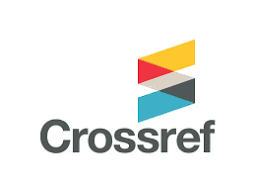Hematologic profiling and spectrum of beta-thalassemia trait in reproductive-age groups
DOI:
https://doi.org/10.59736/IJP.23.03.955Keywords:
Beta Thalassemia, Hemoglobinopathies, Microcytosis, Reproductive AgeAbstract
Background: Beta thalassemia trait (BTT) is a common inherited hemoglobinopathy in Pakistan. These individuals remain asymptomatic and can pass this gene to their offspring, leading to an increased burden of disease, especially in a resource-limited setting. Our objective is to determine the frequency of BTT among individuals aged 15–49 years using CBC and HPLC parameters.
Methods: It is a retrospective cross-sectional study conducted in the central lab of Dr. Ruth K. M. Pfau Civil Hospital, Karachi. Patients whose High-Performance Liquid Chromatography (HPLC) and CBC tests were done between June 2022 to June 2024 were included. All patients of the reproductive age group (15-49 according to WHO) are included. Different CBC parameters such as Hb, Mean Cell Volume (MCV), Mean Corpuscular Hemoglobin (MCH), Mean Cell Hemoglobin Concentration (MCHC) and Hct, along with the percentage level of different Hb variants like HbA2, HbF, HbS, HbC, HbD, and HbE.HbA2 were analysed. Statistical Package for Social Sciences version 25 (SPSS) was used for statistical data analysis.
Results: Study analyzed 176 patients, consisting of 101 females (57.4%) and 75 males (42.6%). Among these, 49 patients exhibited abnormal HPLC results while 127 had normal results. The frequency of BTT was higher in females than in males. Among the three age groups, 15-24, 25-34, and 35-49 years, the highest incidence of BTT was seen in the 25-34 age range, where 20 cases were identified. It was also noted that individuals with BTT tend to have higher average hemoglobin and hematocrit levels, along with lower MCV levels compared to normal individuals.
Conclusion: Frequency of BTT is high in the reproductive age group. Significant differences are observed in hematological indices between BTT and normal individuals, especially in MCV, MCH, and RBC counts. HbA2 levels >3.5% on HPLC proved to be a reliable marker for diagnosing BTT.
References
Fasano RM, Meier ER, Chonat S. Sickle cell disease, thalassemia, and hereditary hemolytic anemias. In: Rossi’s Principles of Transfusion Medicine. 6th ed. Hoboken (NJ): Wiley; 2022. p. 326-45. doi:10.1002/9781119719809.ch30
Ishfaq J, Khan AH, Khan BS, Aziz T, Khalid F, Noureen A, et al. Molecular analysis and prenatal diagnosis of segregating β-thalassemia. Pak J Med Health Sci. 2023 Sep 7; 17(5):658. doi:10.53350/pjmhs2023175658
Gupta A. Thalassemia trait. In: Decision making through problem based learning in hematology: a step-by-step approach in patients with anemia. Singapore: Springer; 2024. p. 53-62. doi:10.1007/978-981-99-8933-1_4
Nerune Y. Study of Pattern of Hemoglobinopathies Using High-Performance Liquid Chromatography in Neonates and Infants”. AJBR [Internet]. 2024 Sep. 13 ;27(1S):938-46.Available from: http://20.193.157.4:9595/xmlui/handle/123456789/5591
Jameel T, Baig M, Murad MA, Gazzaz ZJ, Mal Y, Alyoubi WE, et al. Consanguineous marriages, premarital screening, and genetic testing: a survey among Saudi university students. Front Public Health. 2024 Mar 21;12:1328300. doi:10.3389/fpubh.2024.1328300
Shakoor HA, Ali S, Raza M, Khattak N, Khan ZR, Babar F. Frequency of anemia in individuals with beta-thalassemia trait. Prof Med J. 2024 Apr 1;31(4):593-7. doi:10.3389/fpubh.2024.1328300
Angastiniotis M, Petrou M, Loukopoulos D, Modell B, Farmakis D, Englezos P, et al. The prevention of thalassemia revisited: a historical and ethical perspective by the Thalassemia International Federation. Hemoglobin. 2021; 45(1):5-12. doi:10.1080/03630269.2021.1872612
Guidi GC. Hematological diagnostics. In: Clinical and laboratory medicine textbook. Cham: Springer; 2024. p. 163-93. doi:10.1007/978-3-031-24958-7
Sari DP, Wahidiyat PA, Setianingsih I, Timan IS, Gatot D, Kekalih A. Hematological parameters in individuals with beta thalassemia trait in South Sumatra, Indonesia. Anemia. 2022; 2022:3572986. doi:10.1155/2022/3572986
Ali S, Mumtaz S, Shakir HA, Khan M, Tahir HM, Mumtaz S, et al. Current status of beta-thalassemia and its treatment strategies. Mol Genet Genomic Med. 2021 Dec; 9(12):e1788. doi:10.1002/mgg3.1788
Rashwan NI, Ahmed AE, Hassan MH, Mohammed ME, Bakri AH. Hematological indices in differentiation between iron deficiency anemia and beta-thalassemia trait. Int J Pediatr. 2022; 10(1):15285-95.
Khanzada FA, Asghar S, Chohan U, Najam S, Rajput KK, Sami A, et al. The prevalence and distribution of beta thalassemia trait among outpatient individuals in a tertiary care hospital of Lodhran, Pakistan. Pak J Health Sci. 2024 Nov 30; 191-6.
Kuntaruk S, Tatu T, Keowkarnkah T, Kasinrerk W. Sandwich ELISA for hemoglobin A2 quantification and identification of β-thalassemia carriers. Int J Hematol. 2010 Mar; 91:219-28. doi:10.1007/s12185-009-0490-3
Malakar R, Kour M, Malviya SN, Dangi CB. A review on: β-thalassemia. World J Pharm Res. 2016 Mar 28; 5(6):432-5. doi:10.1016/j.clinbiochem.2009.06.026
Yasmeen H, Hasnain S. Epidemiology and risk factors of transfusion transmitted infections in thalassemia major: a multicenter study in Pakistan. Hematol Transfus Cell Ther. 2019 Nov; 41:316-23. doi:10.1016/j.htct.2019.03.008
Galanello R, Origa R. Beta-thalassemia. Orphanet J Rare Dis. 2010; 5:11. doi:10.1186/1750-1172-5-11
Nazir S, Faraz A, Shahzad N, Ali N, Khan MA, Iqbal M, et al. Prevalence of HCV in β-thalassemia major patients visiting tertiary care hospitals in Lahore, Pakistan. Adv Life Sci. 2014 Aug 25; 1(4):197-201.
Downloads
Published
Issue
Section
License
Copyright (c) 2025 Hina Abbas, Naseem Ahmed, Noorulain Fareed , Ifrah Urooj, Ghania Anwer, Aimen Barkah

This work is licensed under a Creative Commons Attribution-NonCommercial 4.0 International License.
Readers may “Share-copy and redistribute the material in any medium or format” and “Adapt-remix, transform, and build upon the material”. The readers must give appropriate credit to the source of the material and indicate if changes were made to the material. Readers may not use the material for commercial purpose. The readers may not apply legal terms or technological measures that legally restrict others from doing anything the license permits.

